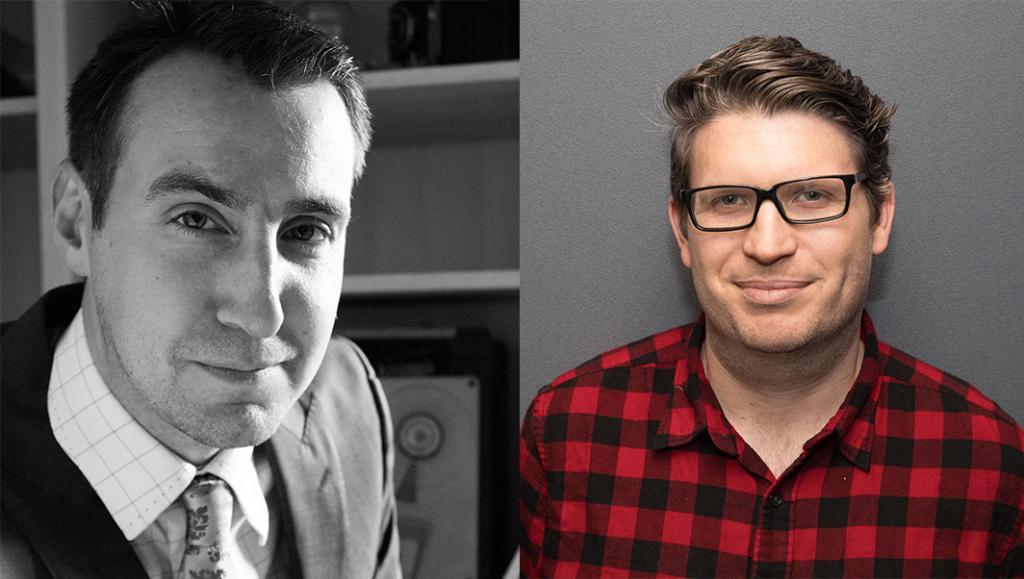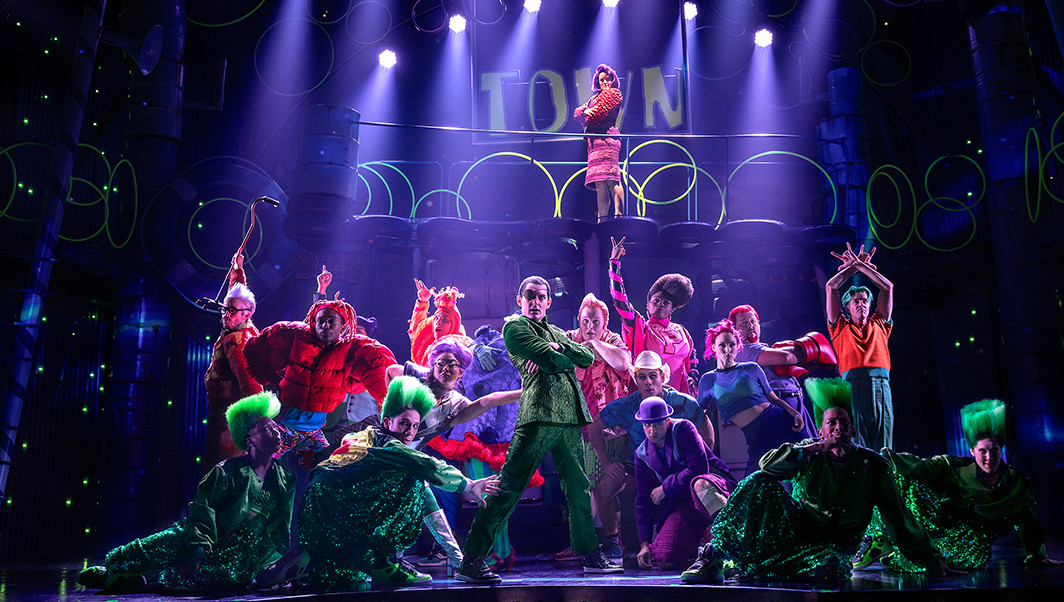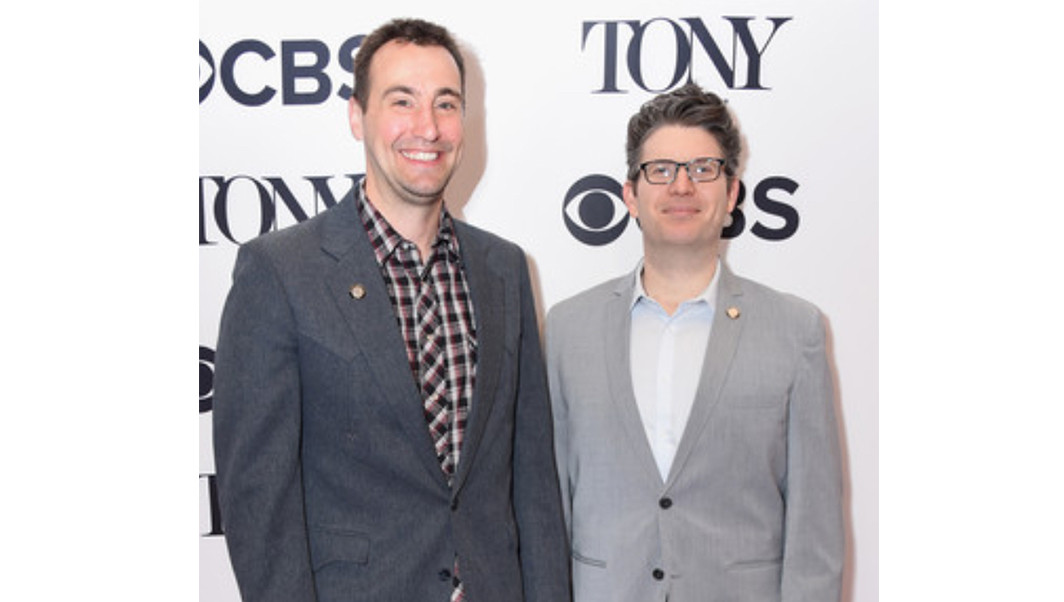Pop Culturalist Chats With SpongeBob SquarePants’ Walter Trarbach and Mike Dobson

If you’ve seen SpongeBob SquarePants on Broadway, you’ll know that it is chockful of sounds–not just musically, but also sound effects. The masters behind all the sound mixing and making are Walter Trarbach, sound designer, and Mike Dobson, live foley designer (for those who don’t know, live foley is making sound effects during a performance, like the noise of squishy walking as an actor walks). Both are nominated together for the Tony for Best Sound Design of a Musical.
We were able to chat with them about their roles, how they created the sounds for the show, and what it was like to be with the production for more than six years.
PC: What drew you to sound design and live foley design?
WT: I began working backstage in theater when I was in junior high. Eventually, I found sound design and enjoyed it because it exists at the intersection of music and technology.
MD: I was a classical percussion student at music school when I took a summer job playing drums for a circus. I learned there that in traditional circus, the drummer is expected to provide sound effects for the action while also playing in the band. It’s an antiquated technique from times before recorded sound. I fell in love with this idea and did a lot of shows with circus performers, dancers, actors, clowns—anyone who was a physical performer. Over time, I learned more and added ideas from film foley and theatrical sound design to the mix to get to this version of live foley sound.
PC: You’ve been with the production for six years. How has being a part of SpongeBob for so long shaped how you view the show? How do you keep things fresh?
WT: I began the project with absolutely no knowledge of the SpongeBob cartoon. The musical has always been fresh because it grows and evolves so much with every iteration. There are always new ideas and challenges. We get to work with a great group of creative people so it never gets dull.
MD: Yes, our first workshop was six years ago this week! I’ve always felt so lucky to work on SpongeBob. I’ve been a super fan of the cartoon since it first aired. The Broadway show and my experience stay fresh through the fact that it is a living, breathing thing that is slightly different every time. Then, the audience brings so much energy each night. They always make it feel new.
PC: How collaborative was the sound and live foley design process with other production departments? And then with each other?
WT: This show is all collaboration all the time. Six years ago, we got together in a room with Mike Dobson, Tina Landau (our director), David Zinn (set and costume designer), and a bunch of actors. We just played around with the vocabulary of SpongeBob and tried out different ideas. For every sound effect in the show, I’m sure there are ten others that we tried and didn’t cut it. The whole spirit of the development has been collaborative. Getting to work so closely with Mike Dobson has been an incredible joy. We both bring a lot of passion and zaniness to the project, and we push each other to be better and enable each other to make the best show possible.
MD: Our director, Tina Landau, creates an amazing environment of play and collaboration in the rehearsal room that we all get to enjoy and participate in throughout the process. I felt especially lucky because the foley has so much overlap with other aspects of the show. I even get to play on drums designed by David Zinn!
Working with Walter has been an amazing highlight throughout the whole process. I’m on stage, so I rely on his ears to hear it as the audience does. Everything I play, whether it’s an electronic sound or an acoustic percussion sound, is informed by what he is hearing.
PC: SpongeBob has a ton going on at all times. What is the biggest challenge in making sure the sound seamlessly fits in with everything else?
WT: You nailed it. There is always something going on, and that is the biggest challenge. There are constant footsteps, reverb effects, soundscapes, tap dancing, actors playing musical instruments, people interacting with the audience, and, on top of that, we have twenty different musical styles. It is nonstop. We worked really hard to make it all fit together.
MD: For me, it’s all about staying in the moment. The fast pace and non-stop nature of our show requires everyone to keep focused and connected at all times to keep all the moving parts aligned.
PC: What is your favorite part of the show each night?
WT: I love it when (spoiler alert) the town is saved, and the bubbles poor out into the auditorium. The first ten times I saw it I cried. The eleventh time I got bubble soap in my eye, and I cried even harder.
MD: I have a new favorite part every night. It’s usually some funny subtle thing that an actor does. They are always cracking me up. Then, at the end, when Spongebob is trying to talk the whole town out of their madness, it always hits me in a very real way. It’s a beautiful reminder of our humanity, and I always leave the show feeling very grateful that I get to be a part of it.
Pop Culturalist Speed Round
Last TV Show You Binge-Watched
WT: I immediately watch every season of It’s Always Sunny in Philadelphia.
MD: BoJack Horseman
Favorite Movie
WT: The Royal Tenenbaums
MD: La Dolce Vita
Favorite Musical
WT: There are other musicals besides SpongeBob Squarepants?
MD: Gypsy (besides SpongeBob of course!)
Favorite Book
WT: Absalom, Absalom!
MD: One Hundred Years of Solitude
Favorite Place You Have Been
WT: Coastal Rhode Island
MD: Berlin
Place You Most Want to Go
WT: Spain
MD: Copenhagen
Person You Most Want to Meet
WT: Notorious RGB. Or the ghost of David Bowie.
MD: Donald Glover




Discussion about this post